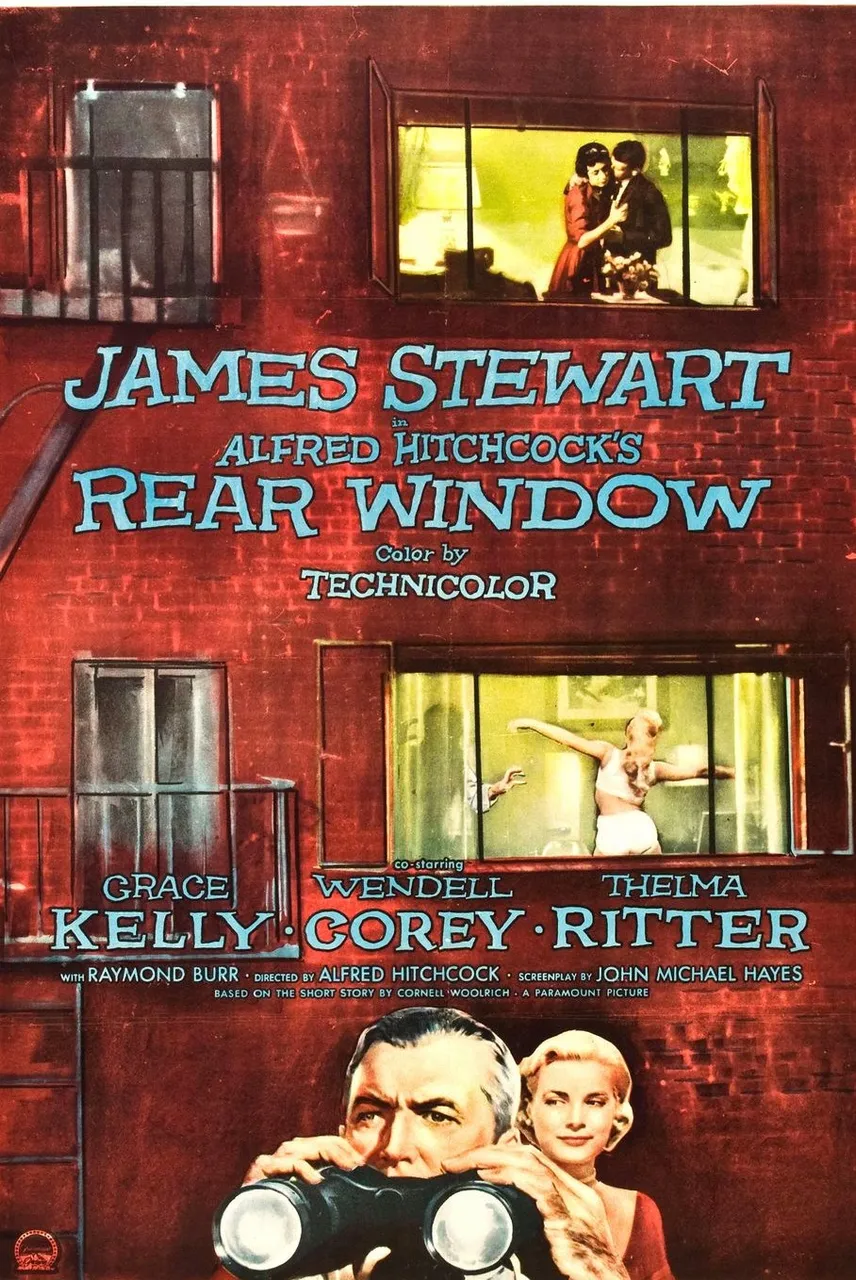
Rear Window is a 1954 American mystery thriller film directed by Alfred Hitchcock and written by John Michael Hayes based on Cornell Woolrich's 1942 short story "It Had to Be Murder." The film stars James Stewart, Grace Kelly, Wendell Corey, Thelma Ritter, and Raymond Burr. The story follows a wheelchair-bound photographer who spies on his neighbors from his Greenwich Village courtyard apartment window and becomes convinced that one of them has committed murder, despite the skepticism of his fashion-model girlfriend. The film's framing and camerawork are legendary, and it is considered by many filmgoers, critics, and scholars to be one of Hitchcock's best, as well as one of the greatest films ever made. It received four Academy Award nominations and was ranked number 42 on AFI's 100 Years...100 Movies list and number 48 on the 10th-anniversary.
Plot
Rear Window is a 1954 American mystery thriller film directed by Alfred Hitchcock and written by John Michael Hayes based on Cornell Woolrich's 1942 short story "It Had to Be Murder." The story follows L.B. "Jeff" Jeffries, a magazine photographer who has broken his left leg and is confined to his Greenwich Village apartment. Jeffries passes his time by spying on his neighbors from his window and becomes convinced that one of them has committed murder. Despite the skepticism of his fashion-model girlfriend, Lisa Carol Fremont, Jeffries and his nurse, Stella, investigate the case. The film's climax involves Jeffries' confrontation with the suspected murderer, Lars Thorwald, and his subsequent fall from his apartment window. The film is considered one of Hitchcock's best and one of the greatest films ever made, with excellent performances by James Stewart, Grace Kelly, and Raymond Burr
Trailer
Cast
- James Stewart as L.B. "Jeff" Jefferies
- Grace Kelly as Lisa Carol Fremont
- Wendell Corey as Det. Lt. Thomas J. Doyle
- Thelma Ritter as Stella
- Raymond Burr as Lars Thorwald
- Judith Evelyn as Miss Lonelyhearts
- Ross Bagdasarian as Songwriter
- Georgine Darcy as Miss Torso
- Sara Berner as Woman on Fire Escape
- Frank Cady as Man on Fire Escape
- Jesslyn Fax as Miss Hearing Aid
- Rand Harper as Newlywed
- Irene Winston as Mrs. Anna Thorwald
- Havis Davenport as Newlywed's Husband
- Marla English as Girl at Songwriter's Party
- Anthony Warde as Detective
- Dorothy Neumann as Nurse
- Kathryn Grant as Girl at Songwriter's Party (uncredited)
- Len Hendry as Policeman (uncredited)
- Bess Flowers as Songwriter's Party Guest (uncredited)
- William 'Wee Willie' Davis as Songwriter's Party Guest (uncredited)
- Forbes Murray as Lars Thorwald's Attorney (uncredited)
- Fred Graham as Detective (uncredited)
- Gig Young as Voice of Lars Thorwald (uncredited)
Director: Alfred Hitchcock
Writer: John Michael Hayes, Cornell Woolrich
Box Office Gross: $37,034,884
Distributor: Paramount Pictures
Release Date (Theaters): Sep 1, 1954
Rerelease Date (Theaters): Jan 21, 2000
Release Date (Streaming): Aug 18, 2015
Theme and Reception
The film explores themes of voyeurism, suspicion, and human nature. It was well-received by both critics and audiences, and it is considered a classic in the mystery thriller genre.
Production Challenges
The film's unique set design, which involved creating an entire courtyard and multiple apartments, presented significant production challenges. Additionally, the use of innovative camera techniques to capture the action from the protagonist's point of view was a notable challenge.
Settings and Visual Styles
The entire film is set within the confines of an apartment and its surrounding courtyard, creating a claustrophobic yet visually engaging setting. The use of long takes and the limited perspective of the protagonist characterize the visual style.
Trivia and Fun Facts
- The entire film was shot on one set, representing the view from the protagonist's apartment.
- The "Hitchcock cameo" in this film is one of the most famous, as he is seen winding the clock in the songwriter's apartment.